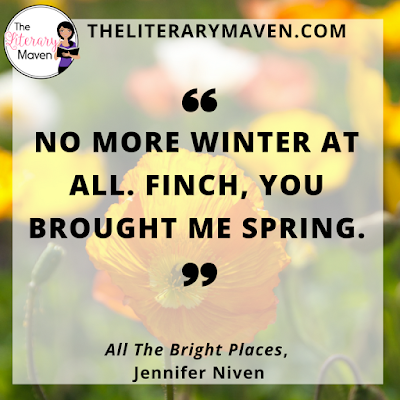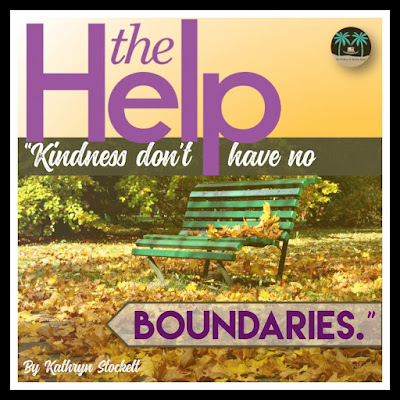While the rest of the world may think that teachers have the summer "off," in reality that's just time that teachers spend planning for next year. Here's 17 of my blog posts that may help you as you prepare whether it's for the first day of school of your first year in the classroom or an even better year two, three, ten, twenty, or even thirty. Click on each linked blog post below for more information.
My First Lessons
1. Use Stations on the First Day of School
Using stations, instead of your typical stand and deliver syllabus and rules review, sets a tone of active learning and gets students up and moving on the first day of school.
2. Use a Digital Breakout on the First Day of School
Give students the opportunity to interact while engage in an activity that is fun and exciting, but also academically purposeful. Inspired by the Jules Verne novel, Around the World in 80 Days, in this back to school breakout, students follow Phileas Fogg's route around the world as they learn about the back to school traditions of different countries. Student use close reading and soft research skills to successfully complete the breakout.
3. Learn About Students Through Coming of Age Poetry
In a writer's workshop, students examine and annotate coming of age poetry. Students use these mentor texts as models to brainstorm, draft, and revise their own coming of age poetry. This lesson is ideal for starting the year as it allows you to get to know your students and build community in your classroom as students share memories and their writing.
Decorating the Classroom
4. Peek Into My English Language Arts Classroom
While I work with small groups of students in an office now, this is what my classroom looked like my last year as a classroom teacher. Decorating your classroom doesn't have to be costly. Get ideas for where to shop and look for inspiration (besides teacher stores) as well as practical tips for arranging your classroom.
5. Replace Your Word Wall With A Word Tree
Decorate your classroom a little differently this year by making a "word tree" instead of a word wall. Use it to hang vocabulary or display student work in a visually interesting way without using up any precious wall space.
6. Get More Whiteboard Space
Whether you still have chalkboards in your classroom, very little whiteboard space, or hate to write, erase , and rewrite, this is an easy, inexpensive solution to adding more white board space in your classroom.
7. Save Time Decorating Next Year
Take purposeful pictures, "photo maps," of your classroom as you set it up this year to save yourself time when you decorate next year.
Establishing Routines
8. Create a System of Classroom Jobs
Giving classroom jobs to middle school and high school students allows them to feel useful and creates a sense of belonging in the classroom. In applying for and carrying out classroom jobs, students will practice real world skills plus it takes a few tasks off your plate, allowing you to focus more on instruction.
9. Make Students Accountable for Their Own Missing Work
A "While You Were Out" Binder puts the responsibility on absent students to get the information and materials he/she missed. This binder is also extremely useful for students who misplace work or want to redo assignments.
10. Prepare for Unprepared Students
An inexpensive, no sharpener needed option for students who do not come to class prepared with a writing utensil is handing out golf pencils.
11. Use Homework Calendars for Accountability
Finding a homework routine that is meaningful for students and manageable for teachers can be a challenge. Use homework calendars to help your students and yourself get organized and stay on top of assignments.
12. Organize Your Library for Easy Selection and Returns
Make it easy for students to select (and return) books of interest to them by organizing your classroom library by genre.
Building Parent Partnerships
13. Start From Day One
Start building positive parent partnerships from the very first day of school and maintain communication with parents throughout the year by sending home a syllabus, creating a parent contact log, and calling as much for the positives as the negatives.
14. Use Technology to Your Advantage
Wouldn't you love to be able to make less phone calls and contact all of your parents or students at once? As teachers, our time is so precious because we always seem to have so little of it, yet so many things to accomplish, so you should know about Remind. It is a tool that will make communication with parents and/or students easier.
Managing Student Behavior
15. Recognize and Reinforce Positive Behaviors
Stop negative behavior in your classroom before it starts by reinforcing your expectations and recognizing positive student behaviors. With two simple tools, I successfully managed student behavior at the secondary level. A ticket system and "shout outs" are little to no cost, require little work for you as the teacher, and will encourage on task, positive behavior from your middle school and high school students.
16. Use a Marble Jar to Build Classroom Community
Marble Jars aren't just for elementary classrooms, but you'll need more than one if you teach more than one section or class. All you'll need for these DIY Marble Jars is some empty containers, pom-pom balls, a ruler, and a permanent marker. They are inexpensive and easy to make, especially if you have multiple classes.
17. Get Strategies From Others
No one person has all the answers and what works in one classroom one year with one group of students may not work the next year. This blog post has ideas from several different teachers.
My First Lessons
1. Use Stations on the First Day of School
Using stations, instead of your typical stand and deliver syllabus and rules review, sets a tone of active learning and gets students up and moving on the first day of school.
2. Use a Digital Breakout on the First Day of School
Give students the opportunity to interact while engage in an activity that is fun and exciting, but also academically purposeful. Inspired by the Jules Verne novel, Around the World in 80 Days, in this back to school breakout, students follow Phileas Fogg's route around the world as they learn about the back to school traditions of different countries. Student use close reading and soft research skills to successfully complete the breakout.
3. Learn About Students Through Coming of Age Poetry
In a writer's workshop, students examine and annotate coming of age poetry. Students use these mentor texts as models to brainstorm, draft, and revise their own coming of age poetry. This lesson is ideal for starting the year as it allows you to get to know your students and build community in your classroom as students share memories and their writing.
Decorating the Classroom
4. Peek Into My English Language Arts Classroom
While I work with small groups of students in an office now, this is what my classroom looked like my last year as a classroom teacher. Decorating your classroom doesn't have to be costly. Get ideas for where to shop and look for inspiration (besides teacher stores) as well as practical tips for arranging your classroom.
5. Replace Your Word Wall With A Word Tree
Decorate your classroom a little differently this year by making a "word tree" instead of a word wall. Use it to hang vocabulary or display student work in a visually interesting way without using up any precious wall space.
6. Get More Whiteboard Space
Whether you still have chalkboards in your classroom, very little whiteboard space, or hate to write, erase , and rewrite, this is an easy, inexpensive solution to adding more white board space in your classroom.
7. Save Time Decorating Next Year
Take purposeful pictures, "photo maps," of your classroom as you set it up this year to save yourself time when you decorate next year.
Establishing Routines
8. Create a System of Classroom Jobs
Giving classroom jobs to middle school and high school students allows them to feel useful and creates a sense of belonging in the classroom. In applying for and carrying out classroom jobs, students will practice real world skills plus it takes a few tasks off your plate, allowing you to focus more on instruction.
9. Make Students Accountable for Their Own Missing Work
A "While You Were Out" Binder puts the responsibility on absent students to get the information and materials he/she missed. This binder is also extremely useful for students who misplace work or want to redo assignments.
10. Prepare for Unprepared Students
An inexpensive, no sharpener needed option for students who do not come to class prepared with a writing utensil is handing out golf pencils.
11. Use Homework Calendars for Accountability
Finding a homework routine that is meaningful for students and manageable for teachers can be a challenge. Use homework calendars to help your students and yourself get organized and stay on top of assignments.
12. Organize Your Library for Easy Selection and Returns
Make it easy for students to select (and return) books of interest to them by organizing your classroom library by genre.
Building Parent Partnerships
13. Start From Day One
Start building positive parent partnerships from the very first day of school and maintain communication with parents throughout the year by sending home a syllabus, creating a parent contact log, and calling as much for the positives as the negatives.
14. Use Technology to Your Advantage
Wouldn't you love to be able to make less phone calls and contact all of your parents or students at once? As teachers, our time is so precious because we always seem to have so little of it, yet so many things to accomplish, so you should know about Remind. It is a tool that will make communication with parents and/or students easier.
Managing Student Behavior
15. Recognize and Reinforce Positive Behaviors
Stop negative behavior in your classroom before it starts by reinforcing your expectations and recognizing positive student behaviors. With two simple tools, I successfully managed student behavior at the secondary level. A ticket system and "shout outs" are little to no cost, require little work for you as the teacher, and will encourage on task, positive behavior from your middle school and high school students.
16. Use a Marble Jar to Build Classroom Community
Marble Jars aren't just for elementary classrooms, but you'll need more than one if you teach more than one section or class. All you'll need for these DIY Marble Jars is some empty containers, pom-pom balls, a ruler, and a permanent marker. They are inexpensive and easy to make, especially if you have multiple classes.
17. Get Strategies From Others
No one person has all the answers and what works in one classroom one year with one group of students may not work the next year. This blog post has ideas from several different teachers.


















